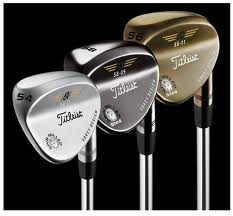My fellow golf professionals know this customer who comes into the golf shop:
Customer: “I need a new wedge.”
Pro: “What loft do you need?”
Customer: “Sand wedge loft.”
Pro: “Ok…standard loft is 56 degrees. How much bounce?”
Customer: “Bounce?”
This exchange is actually more common than you think, and highlights a theme in clubfitting these days: customers will use technology that can launch a NASA satellite to get fit for a driver, but when it comes to wedges they won’t spend that same time and money. Why not pay attention to a club you will probably use more than your driver every round?
In the interests of saving you shots, here are some things to consider. First, go to a PGA Professional and learn about wedges and bounce; don’t be afraid to ask questions! There are basic things you need to know, and it really isn’t that complicated, so don’t be afraid to investigate. Next, understand your type of swing and the general type of turf you play on, because if the golf professional doesn’t know you, he is going to ask you some of these questions:
-Do you take big divots or small divots or no divot at all?
-Is the turf you normally play on very firm and tight (like bent grass), or is it soft and fluffy (like bermuda grass)?
-Are the bunkers where you normally play filled with firm sand or fluffy, powdery sand?
These questions will serve as a basis for finding the right loft and bounce combination for your game. For example, a player that takes deep divots (referred to as a “digger”) needs more bounce on their wedges to allow the club to continue moving through the turf. The player that takes little or no divots (the “slider”) needs less bounce so that the club won’t bounce off of the ground and into the ball. Obviously, there are always some exceptions to the rule, but this is always a good starting point to picking the right wedges, along with the turf and bunker conditions at your local course.
The final point to remember is to find a loft that is going to eliminate huge gaps in your set. It’s always best to never have more than 6 degrees of difference in loft between wedges, as that creates huge holes in yardage that require a ton of practice to negotiate. Here are two examples of wedge set ups:
Pitch 48 degrees / Gap 52 degrees /Sand Wedge 56 degrees / Lob 60 degrees
Pitch 48 degrees / Sand Wedge 54 degrees / Lob 60 degrees
So the next time you head into your local golf shop, go in there armed with some information about your game, and make sure you take the time to work with your local PGA Professional to put that info to use. The shots you save around the greens and on the scorecard will be worth it.




